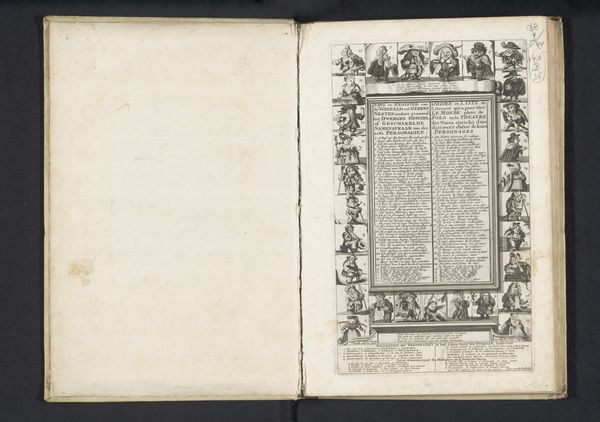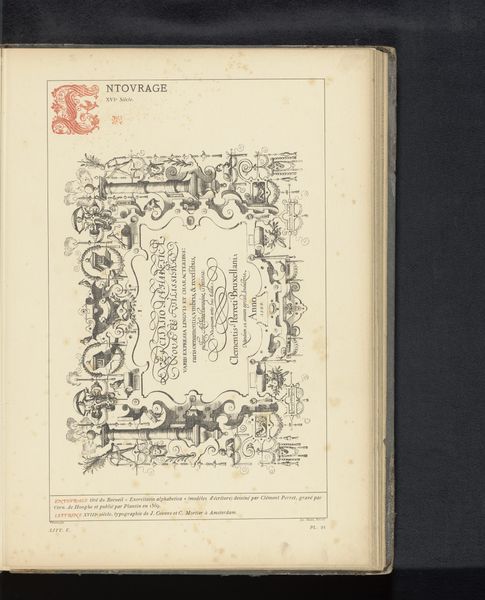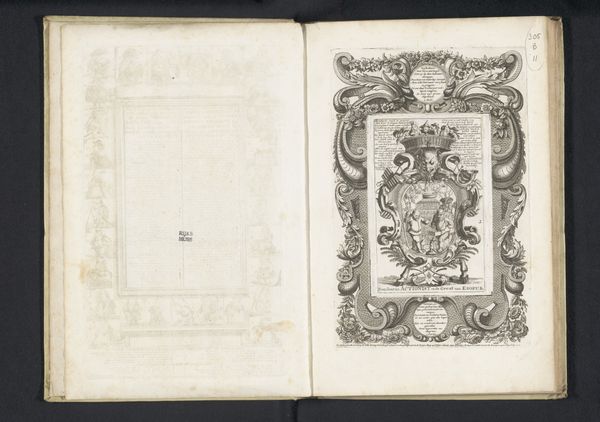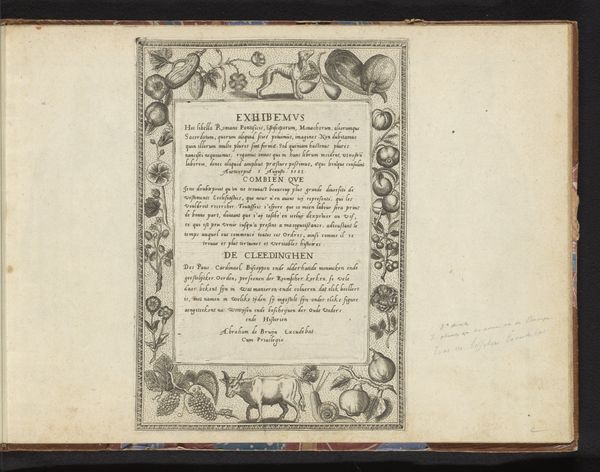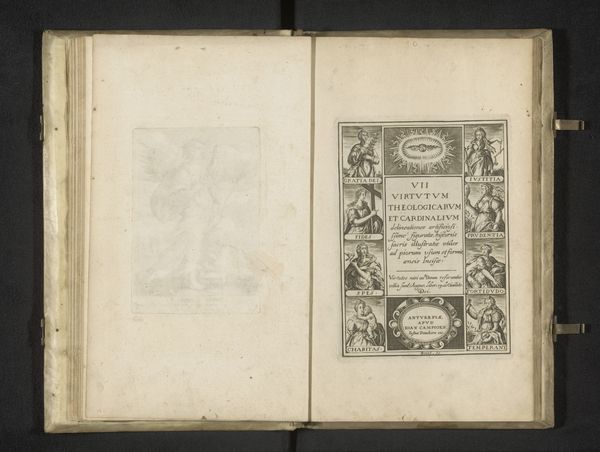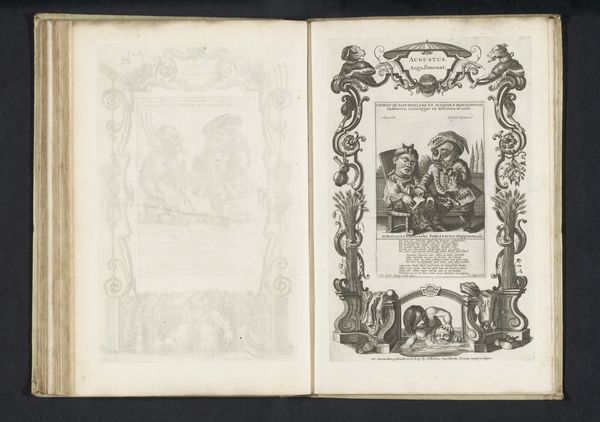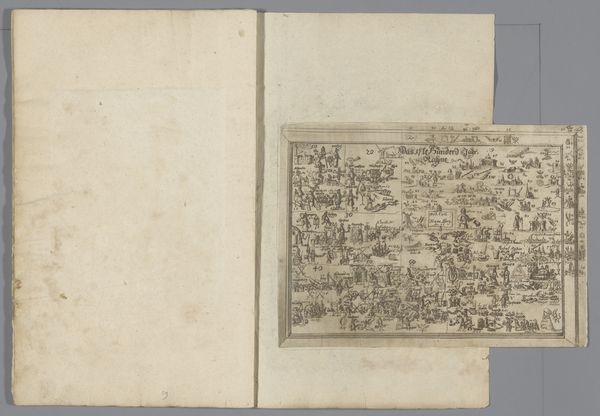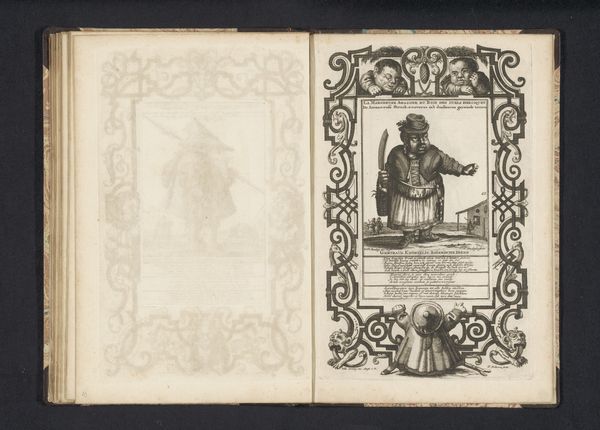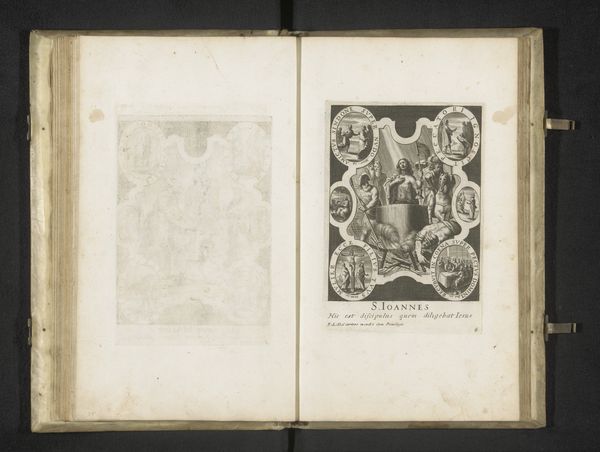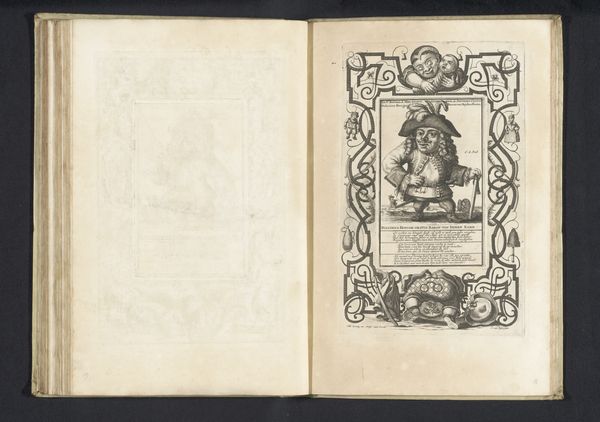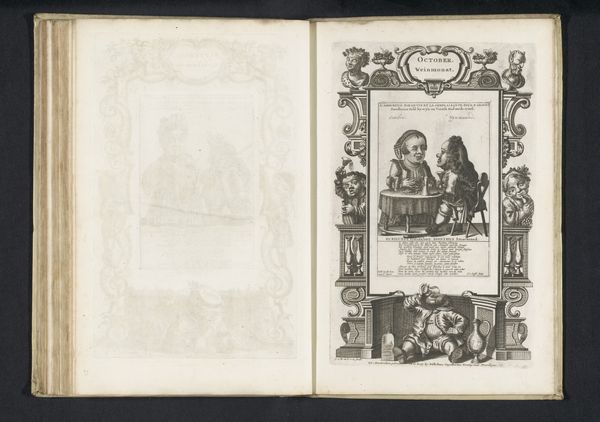
Register voor de prenten 25-50 en A-C in de serie: Bombario Actionist en de Geest van Esopus, 1720 1718 - 1720
0:00
0:00
#
type repetition
#
aged paper
#
homemade paper
#
paper non-digital material
#
paperlike
#
sketch book
#
personal sketchbook
#
paper medium
#
historical font
#
columned text
Dimensions: height 170 mm, width 110 mm, height 308 mm, width 185 mm
Copyright: Rijks Museum: Open Domain
Editor: Here we have Anna Folkema’s "Register voor de prenten 25-50 en A-C in de serie: Bombario Actionist en de Geest van Esopus, 1720," created between 1718 and 1720. It's an open book, revealing text and illustrations printed on what appears to be aged paper. The dense columns of script and framed figures create an intense feeling. What is your take on this? Curator: The handmade paper is absolutely central here. It’s a very physical object that shows the labour involved. Look closely at the texture and wear; these imperfections tell a story of production. This wasn't mass-produced. Someone invested time and skill, likely within a specific social or workshop context, to prepare it. What about the choice of printing method, engraving I believe? Editor: Yes, engraving. How would the process speak to its place in the history of printmaking? Curator: Exactly! Engraving involves a very specific set of skills. We need to consider where the artist learned, what tools were available and what role the division of labor within workshops might have had at the time to produce these plates and distribute them. Editor: And those little figures framing the text... Curator: Right, they suggest something further about production for the consumption of images! And who was buying these books and broadsides and where they would display them is crucial in any reading. Editor: That's fascinating. Seeing the physical evidence of creation gives us a richer understanding of the artist's intention and the societal impact. Curator: Precisely! By examining the means of production, materials and distribution, we connect art to everyday realities and understand artistic choices as part of a bigger, historical picture. Editor: Thanks! I will definitely look for clues of process and materials when analyzing art.
Comments
No comments
Be the first to comment and join the conversation on the ultimate creative platform.
